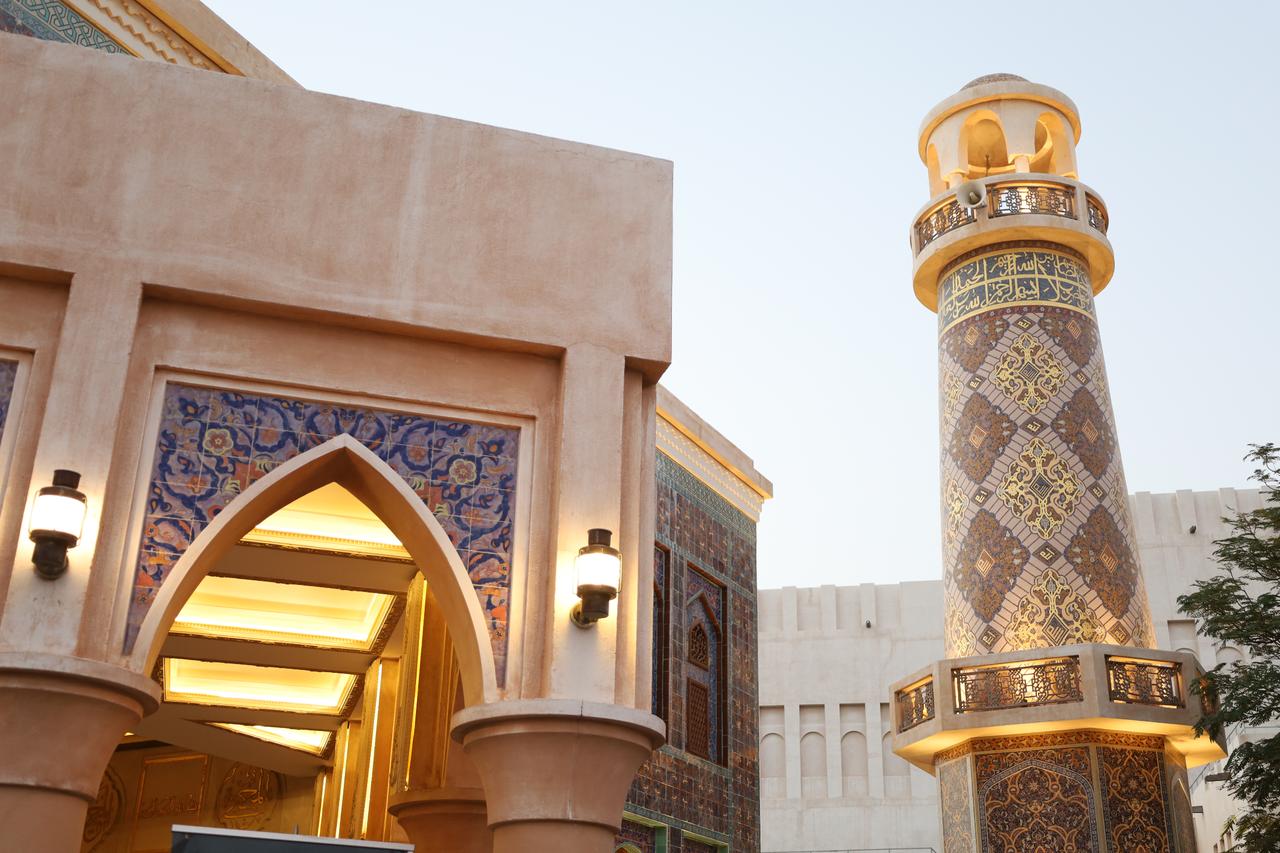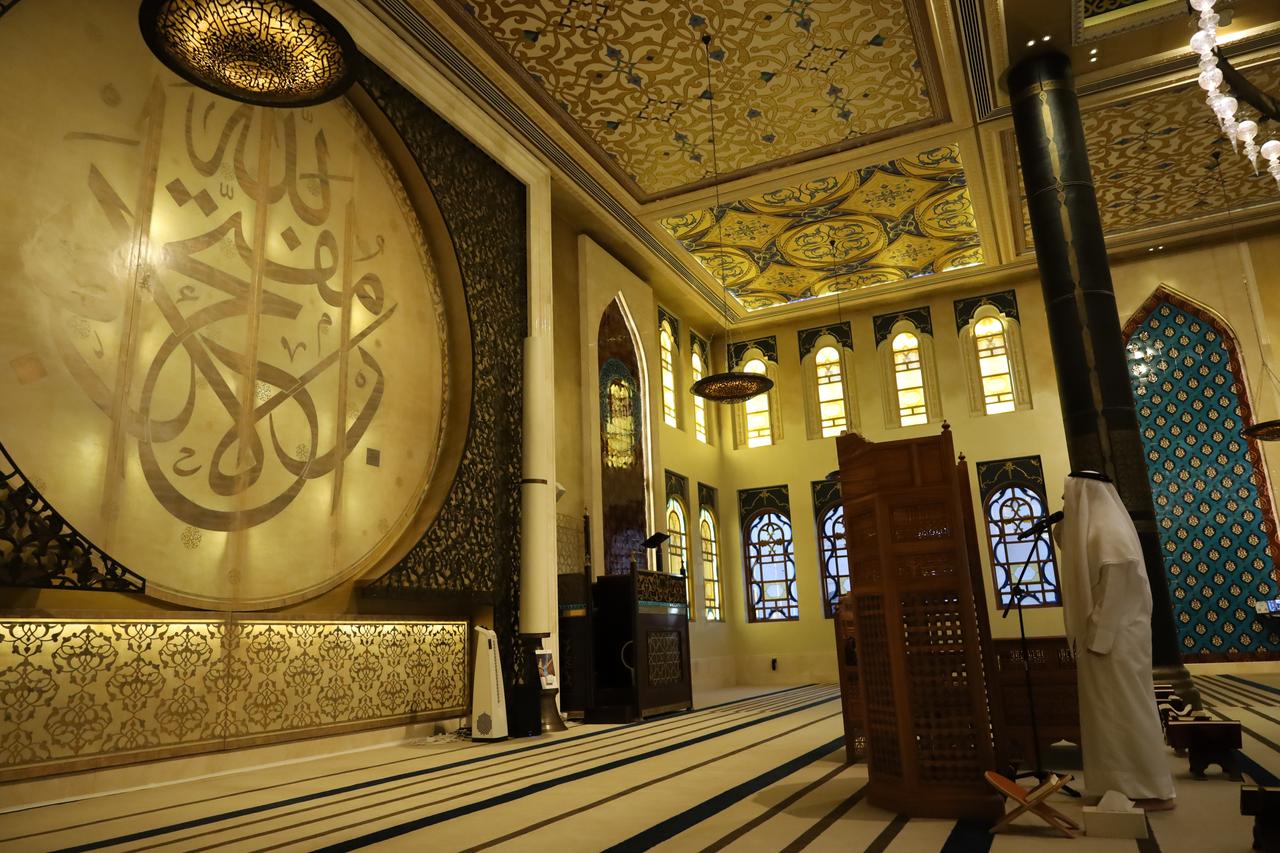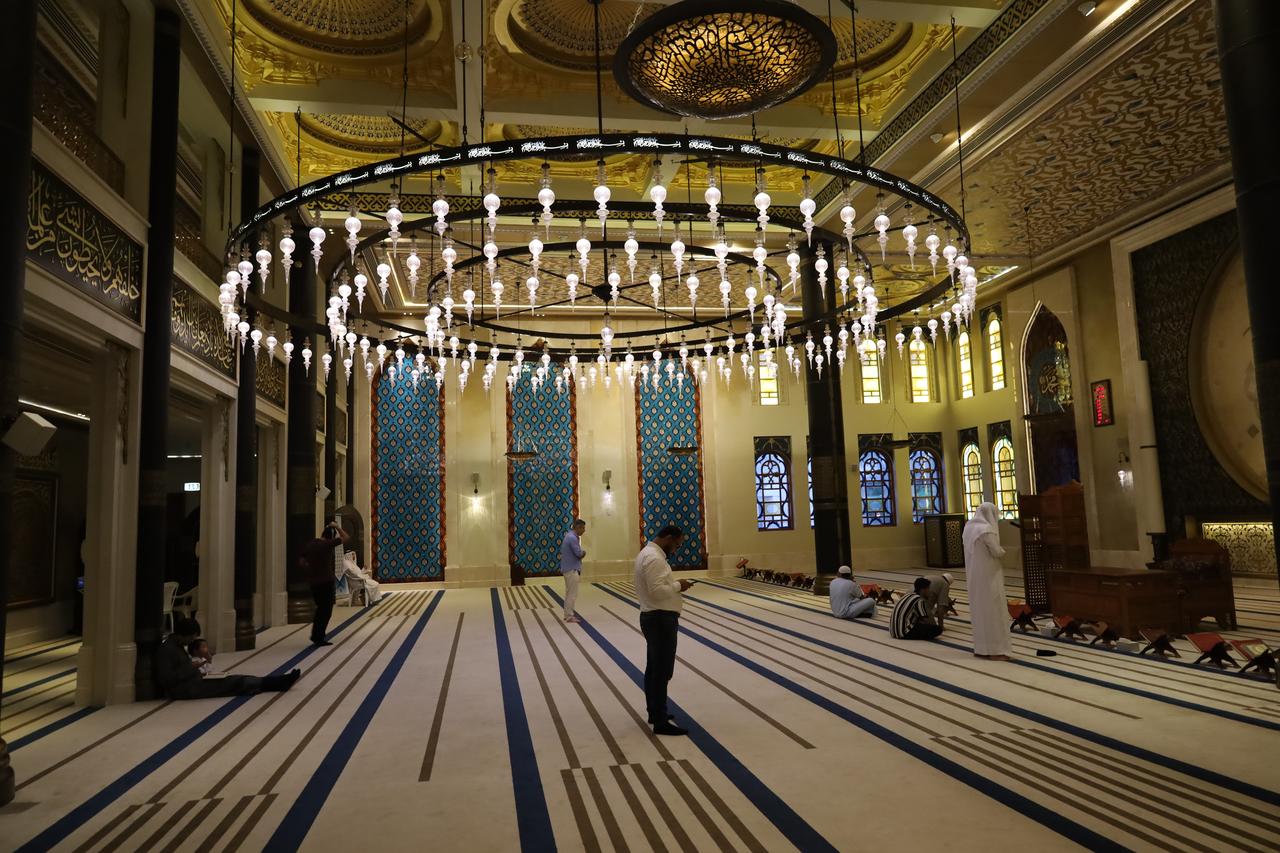
Katara Mosque, known to many as “Qatar’s Turquoise Mosque,” continues to fascinate visitors in Doha with its bold architecture, rich ornamentation, and vibrant tones.
Designed by Turkish architect Zeynep Fadillioglu and opened for worship in 2010, the mosque stands out in the Katara Cultural Village with its unique character, drawing inspiration from centuries-old Islamic traditions while offering a modern visual identity.

The mosque’s most distinctive feature is its turquoise and purple-dominated exterior, which has led locals and tourists alike to refer to it by its popular nickname. The facade is adorned with intricate decorations made of glass mosaics and hand-painted ceramic tiles, giving the structure a textured, luminous quality.
Decorative calligraphy panels, covered in 24-karat gold leaf, add to the visual richness and serve as focal points of Islamic artistic expression.

The ornamental work of Katara Mosque was carried out by a team previously involved in the restoration of Istanbul’s historic Dolmabahce Palace. All ceramics used in the building were custom-produced, ensuring authenticity and cohesion in design. Although the mosque evokes the look of classical Ottoman-Turkish architecture at first glance, it also distinguishes itself from other regional mosques through its original layout and artistic detailing.
The building features nine small domes, a single minaret, and a mihrab—the niche indicating the direction of Mecca—that together form a richly layered architectural composition. Panels inscribed with Arabic calligraphy, including the phrase “Allah is the opener of all gates,” reflect both spiritual and aesthetic traditions. Elements such as Iznik tiles, a form of Turkish hand-crafted ceramics, further anchor the mosque in Türkiye’s decorative arts.

While the design draws heavily from the Ottoman era, it also incorporates visual cues from mosques in Egypt, Syria, and Iran, creating a structure that speaks across geographies and time periods. The minaret, set apart from the main structure, leans more heavily on deep purple hues, offering contrast and reinforcing the mosque’s non-traditional character. Inside, the mosque maintains a bright and spacious ambiance, welcoming worshippers and visitors alike.
Katara Mosque is not only a house of worship but also a cultural landmark. As part of the Katara Cultural Village, it has become one of Doha’s architectural highlights, attracting international tourists who are keen to explore the intersection of art, faith, and heritage. Guided explanations within the mosque offer visitors deeper insights into Islamic beliefs and artistic practices.